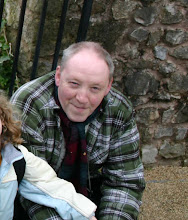Whither ‘Scotsman’ and the NRM?
THAT the National Railway Museum has been having a stressful
time is evident these last couple of years. The tension began to show in 2011
when the long-awaited completion of Flying Scotsman’s restoration did not
happen. At the same time, a £21million redisplay project, entitled NRM+, failed
to receive outside funding and was abandoned. The woes continued through 2012
and have included adverse national media headlines and the rather sudden
departure of Steve Davies as director.
In 2009, I sold my Forsythe Collection of transport and
tourist ephemera to the NRM, all 100 shelved metres of it, following several
years of negotiations… and during those talks, my wife and I gained an insight
into the museum’s processes at work.
It was, therefore, worrying to read in the independent
engineering report into the Flying Scotsman restoration (Dec RM) that a
national museum undertaking its premier restoration creates a situation where
“parts had become lost, loaned to other locos; parts had been removed from the
loco and not inspected and placed in the stores van and forgotten about”.
Neither did I expect to read: “It is difficult to analyse
drift in the project because there was no real plan against which it could be
measured and new tasks were added to the workload as new problems were
uncovered”.
This is despite clear guidelines in a document entitled
Standards in the Museum Care of Larger and Working Objects, published by the
Museums and Galleries Commission in 1994, which states: “Every object and
detached parts of objects should be clearly marked with their own unique
numbers linked to their documentation, which should also record their
location.”
The museum can argue that it has to work within the
engineering culture of the heritage railway movement, which is not that of
conserving the Lindisfarne Gospels! It can also argue that whereas a painting
or a manuscript is usually ‘one piece’, a railway engine is like the proverbial
Irishman’s hammer.
I wonder whether the NRM’S difficulties are the result of
being both the most-visited museum outside London and, at the same time, the
national museum that achieves the most visitors for the least per-head spend?
This value-for-money story could also be the key to its difficulties – that
over a long period of time, it has not received the per-capita spend other
museums have had. Presumably, while the headlines were good, no-one was going
to complain, but over a period of time, problems stack up.
The ‘Scotsman’ report asserts that a weak link developed as
a result of high staff turnover. Museums thrive on the intense knowledge of
their staff. If staff turn over rapidly in senior positions, then detailed
records are essential, yet a personal story I experienced in 2008 was that when
one key member of NRM management left, their line manager could no longer
access their emails.
Under new acting director Paul Kirkman, part of the
self-examination that should now take place ought to include an analysis of
staff turnover in managerial positions.
Also, unlike some museums, the NRM has never had its own set
of trustees. Who (apart from the press) were asking hard questions of the
management as the restoration progressed? Who would have been in place to
support the director if he wished to argue that he needed more of the national
museum cake? Now with the overspend on ‘Scotsman’, it will be an uphill
argument to make, yet the report suggests it is either made or the museum will
have to trim its activities.
Mr Kirkman admits he has no railway connections. The last
three directors could all demonstrate enthusiast affiliations, but the prime
need now is for a strong manager who can offer the institution tough love,
establish what it needs by way of a staff team and secure the resources to put
that team in place.
In the cosmetic work now being undertaken on the A4 Dominion
of Canada, the museum has an excellent chance to show it can get things right
(albeit on someone else's engine).
ROBERT FORSYTHE, Prudhoe.











No comments:
Post a Comment